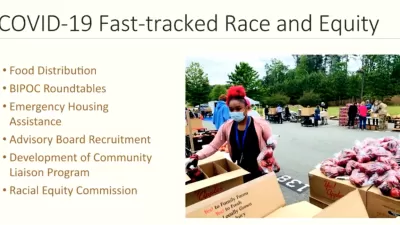The public health crisis of the coronavirus pandemic upended all the normal day-today routines this year. At least there are plenty of great urban planning books to read.

Books in a Time of Isolation and Uncertainty
Books have been a source of inspiration, adventure, and joy in an otherwise stressful and lonely year. Books offered both a feeling of normalcy amid troubling times, and a training ground to prepare us for the job of building back from the great shocks of 2020.
None of these books answer the big, looming questions presented by the pandemic—will people go back to the office, ride the bus, or choose to make their homes in central cities in the same numbers as before, for example—but neither are these books even close to obsolete in the changed world we now find ourselves inhabiting. Many of the realities captured in these books have only been amplified and entrenched by the effects of the pandemic. All of these books prepare the reader to make informed choices and craft a proactive, collaborative response to life during and after the pandemic. In these books, we see inspiration and information that will help for regenerating the new world, rather than just surviving it.
The Planetizen team met in October and November 2020 to make final selections for this list according to the same selection criteria that guided similar "Top Books" lists from years past (2019 was a great year for planning books, in case you're still looking to catch up on your reading as the pandemic lingers into the new year). All books on this list were published between October 2019 and October 2020. A few big titles just missed that window in the past few week and will be considered for next year's list.
If you haven't found time or energy for books during the long, lonely weeks and months of the pandemic, there's still time, and we at Planetizen highly recommend any of the books that follow during the remaining months of the pandemic and beyond.
The Top Planning Books of 2020
The Address Book: What Street Addresses Reveal About Identity, Race, Wealth, and Power
Deirdre Mask
St. Martin's Press
April 14, 2020, 336 Pages
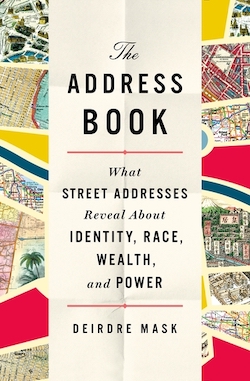 One of the first numbers that anyone memorizes is the address of our childhood homes, so there's no surprise that some of the appeal and effectiveness of The Address Book by Deirdre Mask comes from the intensely personal nature of the subject matter. The intersection of the local and the global is leveraged by Mask in this book for tremendous effect—creating a book that's part travelogue and part call to arms.
One of the first numbers that anyone memorizes is the address of our childhood homes, so there's no surprise that some of the appeal and effectiveness of The Address Book by Deirdre Mask comes from the intensely personal nature of the subject matter. The intersection of the local and the global is leveraged by Mask in this book for tremendous effect—creating a book that's part travelogue and part call to arms.
Any familiarity with the subject matter quickly vanishes as Mask surveys the globe for examples of the importance of street addresses, with no shortage of exotic locations and chapters of history, but also locations in the most developed countries in the world. Many readers will be surprised to discover the numerous social and economic consequences of street addresses (or lack thereof), but add public health, history, and political science to the list of subject matters directly influenced by the simple question: What's your address?
Barrio America: How Latino Immigrants Saved the American City
A.K. Sandoval-Strausz
Basic Books
November 12, 2019, 416 Pages
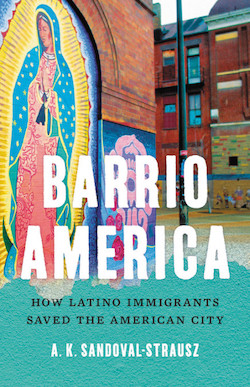 Reading Barrio America is likely to be a bittersweet experience for many. On the one hand, the book by A.K. Sandoval-Strausz provides a long-overdue appreciation of the benefits of Latino immigration in the United States, and makes good use of the book format to present a case for the economic and cultural benefits of immigration to U.S. cities. This information isn't new—demographers, economists, and activists have been making this case, with mountains of evidence, for years. Sandoval-Strausz's immense skill as a writer and the well-chosen case studies of Little Village in Chicago and Oak Cliff in Dallas perfectly frame the narrative. Barrio America is a marvel of well-presented, relevant information that will certainly direct the thinking of the open-minded uninitiated.
Reading Barrio America is likely to be a bittersweet experience for many. On the one hand, the book by A.K. Sandoval-Strausz provides a long-overdue appreciation of the benefits of Latino immigration in the United States, and makes good use of the book format to present a case for the economic and cultural benefits of immigration to U.S. cities. This information isn't new—demographers, economists, and activists have been making this case, with mountains of evidence, for years. Sandoval-Strausz's immense skill as a writer and the well-chosen case studies of Little Village in Chicago and Oak Cliff in Dallas perfectly frame the narrative. Barrio America is a marvel of well-presented, relevant information that will certainly direct the thinking of the open-minded uninitiated.
On the other hand, the country seems further than ever from realizing the potential of immigration, and specifically Latino immigration, to benefit the economic, social, and cultural lives of all Americans. Despite its focus on neighborhoods in two of the country's largest cities, this isn't just a book about the potential of Latino immigration for the densest corners of central cities, but for communities of all shapes, sizes, and geographic locations. As Barrio America makes clear, the cities and communities that embrace Latino immigration and allow Latino culture to flourish will be the cities and communities with the most resilient futures. Barrio America could also be for the less open-minded uninitiated. Let's hope they get the message.
Brave New Home: Our Future in Smarter, Simpler, Happier Housing
Diana Lind
Bold Type Books
October 13, 2020, 272 Pages
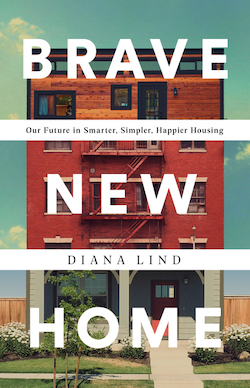 Brave New Home is written for the 150 million or so Americans who believe that living in anything but a detached, single-unit home accommodating only a nuclear family is flirting with danger, relinquishing their privacy, incurring claustrophobia, and encountering strange, different people. It’s also written for the countless planners around the country who are terrified to promote anything other than single-unit zoning, lest they incur the wrath of homeowners and elected officials.
Brave New Home is written for the 150 million or so Americans who believe that living in anything but a detached, single-unit home accommodating only a nuclear family is flirting with danger, relinquishing their privacy, incurring claustrophobia, and encountering strange, different people. It’s also written for the countless planners around the country who are terrified to promote anything other than single-unit zoning, lest they incur the wrath of homeowners and elected officials.
Brave New Home is one part history and one part fantasy. The history part illustrates that a great deal of American residential history has included communal homes, boarding houses, multigenerational houses, and various utopian communal approaches to living. The fantasy part advocates the revival of many of these modes of living, and of new, innovative modes that likewise reject suburban sprawl and the conventional single-family home. In lucid prose palatable to planner and layperson alike, Lind explores options like co-living, accessory dwelling units, senior housing, and many others that promote human connections and, not incidentally, make more efficient use of land than do most suburban communities. Lind extols planners to open their minds to new possibilities and, perhaps, push back against the forces of traditionalism that keep many communities cowardly, stodgy, and not particularly home-y.
City on a Hill: Urban Idealism in America from the Puritans to the Present
Alex Krieger
Belknap Press
October 29, 2019, 464 Pages
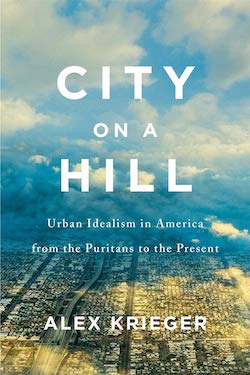 City on a Hill is the sort of book that may never come around again. It accounts for essentially the entire scope of American urban history, starting with its namesake proclamation by John Winthrop, and goes right up to the emergence of "smart cities" and the rise of the creative class. It is reverent, but not uncritical. Its thesis is that American cities collectively always had an idealistic side to them, even in a country that reveres rural landscape and lifestyles, and that many individual cities—from Chicago to New Orleans to Las Vegas, among others—have striven toward idiosyncratic ideals. And it is not uncritical. Clearly, utopia has never been achieved in America. The hill has often been too high to climb, or urban leaders have never truly tried to climb it.
City on a Hill is the sort of book that may never come around again. It accounts for essentially the entire scope of American urban history, starting with its namesake proclamation by John Winthrop, and goes right up to the emergence of "smart cities" and the rise of the creative class. It is reverent, but not uncritical. Its thesis is that American cities collectively always had an idealistic side to them, even in a country that reveres rural landscape and lifestyles, and that many individual cities—from Chicago to New Orleans to Las Vegas, among others—have striven toward idiosyncratic ideals. And it is not uncritical. Clearly, utopia has never been achieved in America. The hill has often been too high to climb, or urban leaders have never truly tried to climb it.
This expansive history is in stark contrast to the far angrier, sadder—and crucial—strains of criticism that have arisen in recent years, seeking social justice while also lambasting essentially everything about American urban development. Indeed, City on a Hill does not necessarily disagree with that sort of activism. But it comes from a different place. Author Alex Krieger is old-school—a venerable professor of urban design at Harvard. Cities on a Hill is clearly his life’s work, and it conveys an astonishing, inspiring degree of erudition, with easy citations from literature, religion, and the arts. City on a Hill is a rich, leisurely history. It is not urgent. But those activists and advocates who envision truly better American cities would do well to find out from Krieger how they and their ideals fit in to a long, complex, and unfinished saga.
Feminist City: Claiming Space in a Man-Made World
Leslie Kern
Verso
July 2020, 224 Pages
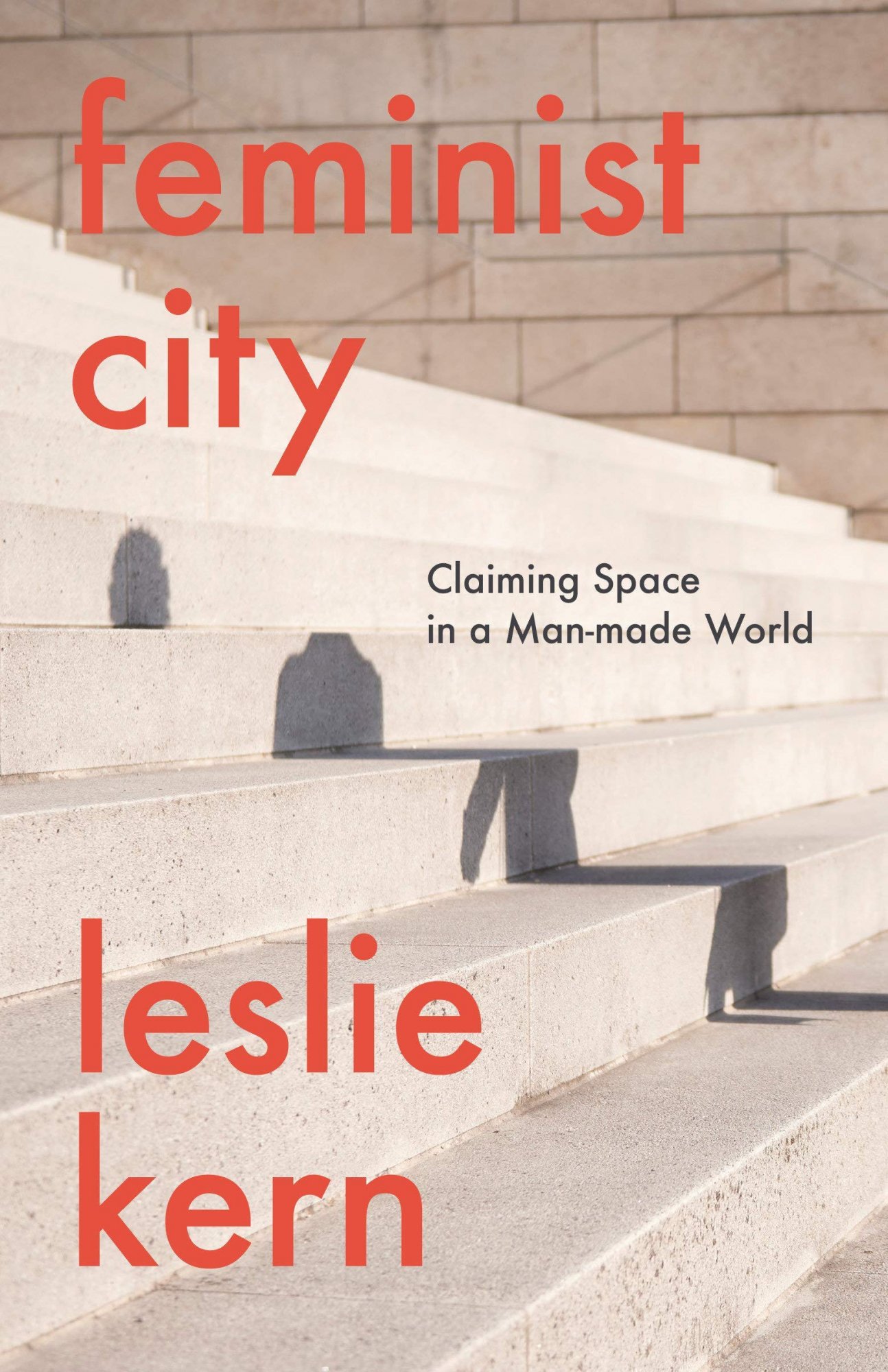 Anyone with an ounce of awareness probably knows, implicitly, that cities—like almost everything else in the modern world—have generally been designed by, run by, and skewed to the advantage of men. Leslie Kern, a professor of geography at Mount Allison University, dispenses with the implication.
Anyone with an ounce of awareness probably knows, implicitly, that cities—like almost everything else in the modern world—have generally been designed by, run by, and skewed to the advantage of men. Leslie Kern, a professor of geography at Mount Allison University, dispenses with the implication.
In Feminist City, Kern lays out the myriad ways in which men have historically dominated cities and city-building, and she explains many of the ways that women are disadvantaged, from inconveniences like curbs that don’t accommodate strollers to mortal threats like assailants who lurk around dark corners. Her account is likely to be familiar to almost every woman who lives in a city and, possibly, a revelation to many men who blithely stroll wherever and whenever they please. But while Feminist City is an alarm, it is also a celebration and a deeply personal book. Kern loves cities. She recounts many appealing anecdotes from her own adolescence and adulthood, largely in Toronto, to illustrate how exciting cities can be. But she knows that cities can be better for women and, ideally, better for everyone.
Feminist City is a call for gender equity in planning (and for intersectionality), and it’s one that planners of all genders should heed.
Golden Gates: Fighting for Housing in America
Conor Dougherty
Penguin Random House
February 18, 2020, 304 Pages
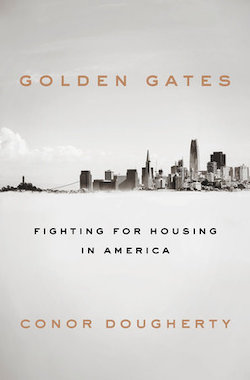 Golden Gates might not be the last account of YIMBYism, the relatively new pro-housing movement that has arisen around the country, but it deserves credit for being the first—and for being excellent. New York Times reporter Connor Doughtery was, first and foremost, in the right place at the right time, covering the right subject: the mid-2010s, the Bay Area, and housing. Beyond that, Dougherty is also a terrific writer with an eye not only for the economic and political complexities of the housing crisis that has ravaged California and other high-cost areas but for the personalities that make up the YIMBY movement.
Golden Gates might not be the last account of YIMBYism, the relatively new pro-housing movement that has arisen around the country, but it deserves credit for being the first—and for being excellent. New York Times reporter Connor Doughtery was, first and foremost, in the right place at the right time, covering the right subject: the mid-2010s, the Bay Area, and housing. Beyond that, Dougherty is also a terrific writer with an eye not only for the economic and political complexities of the housing crisis that has ravaged California and other high-cost areas but for the personalities that make up the YIMBY movement.
The book includes profiles of Sonja Trauss, the ur-YIMBY who founded the San Francisco Bay Area Renters Federation, as well as YIMBY State Senator Scott Wiener, and many other players in the struggle to promote housing in San Francisco and beyond. Whether YIMBYism triumphs in the long run or fades into the background like an aging hippie, Golden Gates is and will be the definitive account of a distinctive moment in American urban history.
Missing Middle Housing: Thinking Big and Building Small to Respond to Today’s Housing Crisis
Dan Parolek
Island Press
July 2020, 328 Pages
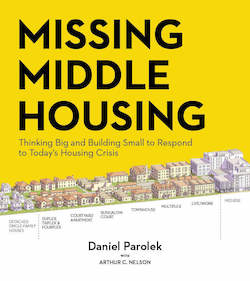 Few causes of planning reform from recent history have succeeded so thoroughly at adoption into the law of the land as Missing Middle Housing has in recent years, and it is only right that Parolek, who coined the term, has written this definitive guide to the subject. Some of the success of the movement toward Missing Middle Housing probably hinges on the ability of Parolek and other champions of Missing Middle Housing to effectively illustrate the concept, and this book is full of colorful, informative graphics and photos.
Few causes of planning reform from recent history have succeeded so thoroughly at adoption into the law of the land as Missing Middle Housing has in recent years, and it is only right that Parolek, who coined the term, has written this definitive guide to the subject. Some of the success of the movement toward Missing Middle Housing probably hinges on the ability of Parolek and other champions of Missing Middle Housing to effectively illustrate the concept, and this book is full of colorful, informative graphics and photos.
The graphics could be easily dragged and dropped onto the pages of the most contemporary zoning codes, and the pictures show real world examples of the many beautiful examples of Missing Middle Housing types built before single-family detached housing became the default setting for the vast, sprawling majority of U.S. development. There is so much potential in the United States for new kinds of density, and every unique community has numerous options to choose from in deciding how best to implement Missing Middle reforms. Missing Middle Housing is coming—this book will ensure that planners will be ready.
Race for Profit: How Banks and the Real Estate Industry Undermined Black Homeownership
Keeanga-Yamahtta Taylor
The University of North Carolina Press
October 2019, 368 Pages
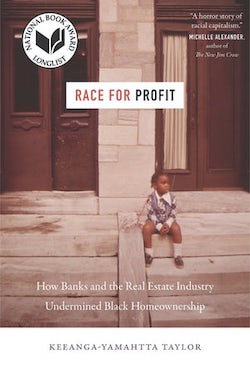 The ways in which the United States’ land use regime exploits Black Americans seemingly have no bounds. As Keenaga Yamhahtta-Taylor, a professor of African American studies at Princeton, explains, the demise of racist redlining practices of the first half of the 20th century did not result in a bonanza of homeownership for Black Americans. Instead, it simply gave way to what she describes as "predatory inclusion." With the federal government backing mortgages for previously excluded people, a new class of lenders and real estate agents arose to push under-qualified, naive, and (often) women buyers into risky loans and then, when the moment was ripe, foreclose upon them. What’s particularly insidious about these policies is that they were invisible, existing in loan agreements and on ledgers rather than on the ground in segregated (and nominally desegregated) neighborhoods.
The ways in which the United States’ land use regime exploits Black Americans seemingly have no bounds. As Keenaga Yamhahtta-Taylor, a professor of African American studies at Princeton, explains, the demise of racist redlining practices of the first half of the 20th century did not result in a bonanza of homeownership for Black Americans. Instead, it simply gave way to what she describes as "predatory inclusion." With the federal government backing mortgages for previously excluded people, a new class of lenders and real estate agents arose to push under-qualified, naive, and (often) women buyers into risky loans and then, when the moment was ripe, foreclose upon them. What’s particularly insidious about these policies is that they were invisible, existing in loan agreements and on ledgers rather than on the ground in segregated (and nominally desegregated) neighborhoods.
Whereas other scholars have told these important stories in human terms (most notably Yamhahtta-Taylor's colleague Matthew Desmond in 2016's Evicted), Yamhahtta-Taylor focuses on meticulous research. Race for Profit is not so much a gripping read as it is a scholarly masterpiece that provides yet more evidence of the racist underpinnings of America’s approach to home ownership.
Right of Way: Race, Class, and the Silent Epidemic of Pedestrian Deaths in America
Angie Schmitt
Island Press
August 2020, 248 Pages
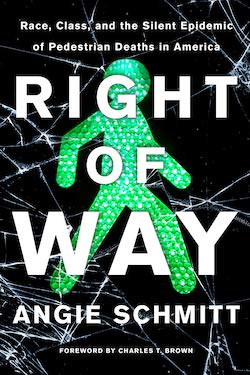 There are many reasons to read Right of Way, to be sure, but here are two of the most prominent. One, you're already familiar with Angie Schmitt's previous work, but want to continue to support one of the best writers and advocates on the subjects of traffic safety in the entire country. Those kinds of readers, i.e., the most ardent Streetsblog readers and Twitter followers, will still find plenty of new, actionable material in Right of Way.
There are many reasons to read Right of Way, to be sure, but here are two of the most prominent. One, you're already familiar with Angie Schmitt's previous work, but want to continue to support one of the best writers and advocates on the subjects of traffic safety in the entire country. Those kinds of readers, i.e., the most ardent Streetsblog readers and Twitter followers, will still find plenty of new, actionable material in Right of Way.
The second reason to read this book is more of a moral imperative. If you aren't familiar with many causes of traffic fatalities, and the grave threats facing pedestrians in a world full of automobiles, it's time to get to work. As detailed by Schmitt here, the number of pedestrians killed by automobiles is rising every year. Pedestrian fatalities are rising even as politicians have promised to eliminate traffic fatalities entirely (based on the stories you'll read in Right of Way, Vision Zero read as some kind of sick joke to the historians of the future). Schmitt is one of the very best contemporary journalist-advocates writing on the built environment, whose skills are most obvious when digging beneath the numbers to tell the stories of humanity, not only to the illuminating the faces and lives of the departed, but also to the specific design and political failures that allow this carnage to continue unabated.
The Sprawl: Reconsidering the Weird American Suburbs
Jason Diamond
Coffee House Press
August 25, 2020, 256 Pages
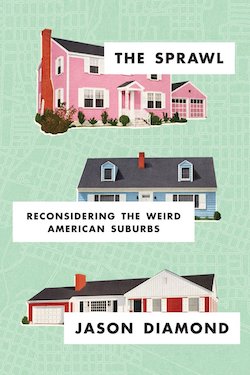 The Sprawl is an odd sort of book in this day and age. New York City-based author Jason Diamond writes like an accomplished hipster, with pluck and humor and pop culture references straight out of the Wayne's World basement. You'd expect him to put all of that talent and energy to describing the latest up-and-coming neighborhood in Detroit or bemoaning how square Brooklyn has become. Instead, he uses it to celebrate the suburbs—or at least to celebrate those instances when they aren’t totally boring. Diamond isn’t an apologist for the suburbs per se. He just refuses to condemn them, and he, unlike many critics of sprawl, makes the effort to discover what can be interesting, delightful, and enriching about them.
The Sprawl is an odd sort of book in this day and age. New York City-based author Jason Diamond writes like an accomplished hipster, with pluck and humor and pop culture references straight out of the Wayne's World basement. You'd expect him to put all of that talent and energy to describing the latest up-and-coming neighborhood in Detroit or bemoaning how square Brooklyn has become. Instead, he uses it to celebrate the suburbs—or at least to celebrate those instances when they aren’t totally boring. Diamond isn’t an apologist for the suburbs per se. He just refuses to condemn them, and he, unlike many critics of sprawl, makes the effort to discover what can be interesting, delightful, and enriching about them.
Diamond previously wrote about 1980s film director John Hughes, and pop culture references—to music, movies, brands, and everything else—permeate The Sprawl. The dude clearly grew up on a diet of MTV, and no reference is too obscure for him to drop it in deadpan. He discusses the cultural significance of shopping malls, and revels in reporting on which celebrities grew up in which seemingly obscure bedroom communities. He dabbles in the politics of race and of development: When a beloved golf course in Connected is threatened with a development of seven condos, he wryly notes, "there isn’t a Jane Jacobs of the suburbs that I’m aware of." Well, Diamond might just be it.
The 99% Invisible City: A Field Guide to the Hidden World of Everyday Design
Roman Mars and Kurt Kohlstedt
Houghton Mifflin Harcourt
October 6, 2020, 400 Pages
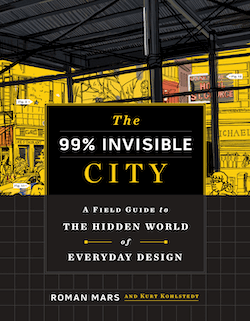 The 99% Invisible podcast has a legion of regular listeners, who tune in for stories about the hidden details that define the built environment, continuing a tradition we associate with Jane Jacobs. (And is that an homage to Jacobs hidden in the cover of The 99% Invisible City? It sure looks like from here.) If you're already a fan of the podcast, you'll recognize the familiar 99% Invisible voice in the written text, and the eye for detail in revealing the little things that make cities so big in our imaginations and dreams.
The 99% Invisible podcast has a legion of regular listeners, who tune in for stories about the hidden details that define the built environment, continuing a tradition we associate with Jane Jacobs. (And is that an homage to Jacobs hidden in the cover of The 99% Invisible City? It sure looks like from here.) If you're already a fan of the podcast, you'll recognize the familiar 99% Invisible voice in the written text, and the eye for detail in revealing the little things that make cities so big in our imaginations and dreams.
The subtitle of the book harkens to the field guides that usually focus on the flora and fauna of natural environment, but that approach fits the urban environment perfectly with The 99% Invisible City. Instead of turdus migratorius or pinus contorta, in this book we can identify the pavement markings and façade retrofits, in addition to signs of the urban world of flora and fauna that sometimes get overlooked in the concrete jungle.
This book was made for companionship on a long, adventurous stroll to new parts of the city, for a relaxing and reflective day in the park, or for a fresh perspective on old, familiar haunts. Let's go (with our masks securely fashioned around our mouths and noses, of course)!
Honorable Mention
Every year there are many books that just miss the list but are of the highest quality of discourse on subjects related to planning, urban design, community, and the environment. In a general sense, this year was no different, but in a specific sense this year was very different because of the large crop of books written by current and former Planetizen contributors.
First on the list, we have to recognize the Urban Mystique by one of the authors of this post, Josh Stephens. The Urban Mystique: Notes on California, Los Angeles, and Beyond is a collection of essays on the subject of the great state of California, borrowing its title from the phrase by Betty Friedan.
One of the Plantizen's newest bloggers and most valued contributors, Joan Fitzgerald, wrote Greenovation: Urban Leadership on Climate Change. All of Fitzgerald's writing is defined by keen policy insights and a rigorous attention to the details of equity.
Readers interested in the fertile ground tilled by Dean Saitta in previous writings for this site will want to check out Intercultural Urbanism: City Planning from the Ancient World to the Modern Day for additional depth and breadth on a topic with numerous contemporary and historical case studies.
Shane Phillips, a former blogger for Planetizen and essential voice in the planning discussion on social media, wrote The Affordable City: Strategies for Putting Housing Within Reach, which provides pragmatic solutions to the housing affordability crisis facing many cities before the pandemic, which is all but a certainty to last well beyond the final infections.
Rick Willson, a frequent contributor of considerable planning teaching expertise to the Planetizen Courses platform, wrote Reflective Planning Practice: Theory Cases, and Methods as a tool for professional planners to develop their skills in dealing with the realities of planning and development.
And finally, Jonathan Barnett, another Planetizen Course instructor, has written the definitive book on the subject of regional planning for contemporary times. Designing for the Megaregion: Meeting Urban Challenges at a New Scale reminds us that not all planning is regional, and in an expanding world, some of that planning will have to occur at the megaregional level.

Planetizen Federal Action Tracker
A weekly monitor of how Trump’s orders and actions are impacting planners and planning in America.

Restaurant Patios Were a Pandemic Win — Why Were They so Hard to Keep?
Social distancing requirements and changes in travel patterns prompted cities to pilot new uses for street and sidewalk space. Then it got complicated.

Map: Where Senate Republicans Want to Sell Your Public Lands
For public land advocates, the Senate Republicans’ proposal to sell millions of acres of public land in the West is “the biggest fight of their careers.”

Maui's Vacation Rental Debate Turns Ugly
Verbal attacks, misinformation campaigns and fistfights plague a high-stakes debate to convert thousands of vacation rentals into long-term housing.

San Francisco Suspends Traffic Calming Amidst Record Deaths
Citing “a challenging fiscal landscape,” the city will cease the program on the heels of 42 traffic deaths, including 24 pedestrians.

California Homeless Arrests, Citations Spike After Ruling
An investigation reveals that anti-homeless actions increased up to 500% after Grants Pass v. Johnson — even in cities claiming no policy change.
Urban Design for Planners 1: Software Tools
This six-course series explores essential urban design concepts using open source software and equips planners with the tools they need to participate fully in the urban design process.
Planning for Universal Design
Learn the tools for implementing Universal Design in planning regulations.
Heyer Gruel & Associates PA
JM Goldson LLC
Custer County Colorado
City of Camden Redevelopment Agency
City of Astoria
Transportation Research & Education Center (TREC) at Portland State University
Camden Redevelopment Agency
City of Claremont
Municipality of Princeton (NJ)




























